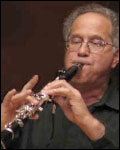Twenty-eight year Guild member Dave Golber has degrees in mathematics. He taught math, did computer stuff, and now makes and repairs violins, with a special interest in Norwegian Hardanger fiddles.



Twenty-eight year Guild member Dave Golber has degrees in mathematics. He taught math, did computer stuff, and now makes and repairs violins, with a special interest in Norwegian Hardanger fiddles.

2010
AL#102 p.5 read this article
David Golber

2008
AL#96 p.58
David Golber

2008
AL#93 p.7
David Golber

2005
AL#83 p.61 BRB7 p.501
David Golber

2002
AL#72 p.50 BRB6 p.420 read this article
David Golber

1993
AL#36 p.26 BRB3 p.410 read this article
David Golber

1993
AL#33 p.46 BRB3 p.310 read this article
David Golber

1986
AL#8 p.5
David Golber
